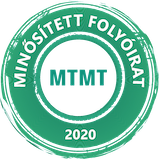Román közterületnevek a két világháború közti időszak romániai magyar napilapjaiban
Absztrakt
Romanian public place names in the Hungarian press in Transylvania between the two world wars
This paper examines the appearance of street and other public place names in the Hungarian written press in Transylvania between the two world wars, using the example of three daily papers (Aradi Hírlap [Arad Journal], Keleti Újság [Eastern Newspaper] and Brassói Lapok [Brassó Papers]) that represent the three main centers of the Hungarian press of the era. A special feature of the Hungarian press in this period was that many elements (place names, names of official establishments, texts of official announcements and advertisements) appeared in Romanian and sometimes in German, as well. Transylvania was attached to Romania after the First World War, which brought significant changes to the lives of Hungarian people in the area in political, economical, cultural as well as linguistic terms. The status of the Hungarian language changed: it became a minority language, Romanian becoming the official and, in certain situations (for example, in official usage), the compulsory language. The authorities renamed the settlements, official establishments and public places, which all received Romanian names, and these name changes also appeared in the newspapers. The author analyses the various methods by which the journalists and the advertisers tried to make the place names identifiable for all the nationalities of the country. The first part of the paper presents the status of the Hungarian press in the period; the second part classifies the methods of public-place-name formation (focusing on Romanian, bilingual and Hungarian public place names); this section is followed by a description of the social facts that might have influenced the appearance of these names as well as other Romanian elements in Hungarian newspapers. This paper will help contemporary sociolinguistic studies to understand the different processes of language contact.




